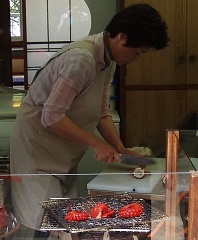 Learn how to prepare and cook food.
Learn how to prepare and cook food.
Understand the principles for selecting, cleaning, cutting, preserving, flavouring, mixing, cooking ....and everything else involved in preparing food for consumption.
Become a better cook at home, socially, or for work
This course complements studies in Food and Beverage Management, Event Management and Self Sufficiency -it all depends upon why you need to learn food preparation. Some may wish to become more self sufficient, others may wish to work in a restaurant, catering services, culinary supplies (eg. a kitchen shop) or hospitality services.